We have an old Kitchen Aid KUDS03CTSS3 dishwasher. The manufacturing dates on the parts inside range anywhere from 2008-2011, so it's getting pretty old – somewhere between 12 and 15 years as of 2023.
We've had no issues with it up 'til a couple weeks ago, when we noticed that the door on the detergent dispenser no longer opened automatically during the wash cycle.
The detergent dispenser looks like this:

To run a load, you put some soap into both compartments and close the lid. Soap in the pre-wash compartment trickles out through the plastic grate while soap in the main wash area remains sealed in. At some point – about 15-20 minutes later in our dishwasher – the lid swings open, releasing the soap from the main wash compartment. Or, at least, it used to.
The lid could still be operated manually; I could close it and it would latch, and then I could unlatch it using the little grey latch and the spring in the hinge would force it to fling open. Since there didn't appear to be any mechanical issues with the door, this pointed to an issue with the electronics controlling the dispenser.
Upon opening up the main body of the dishwasher, one issue became immediately apparent.
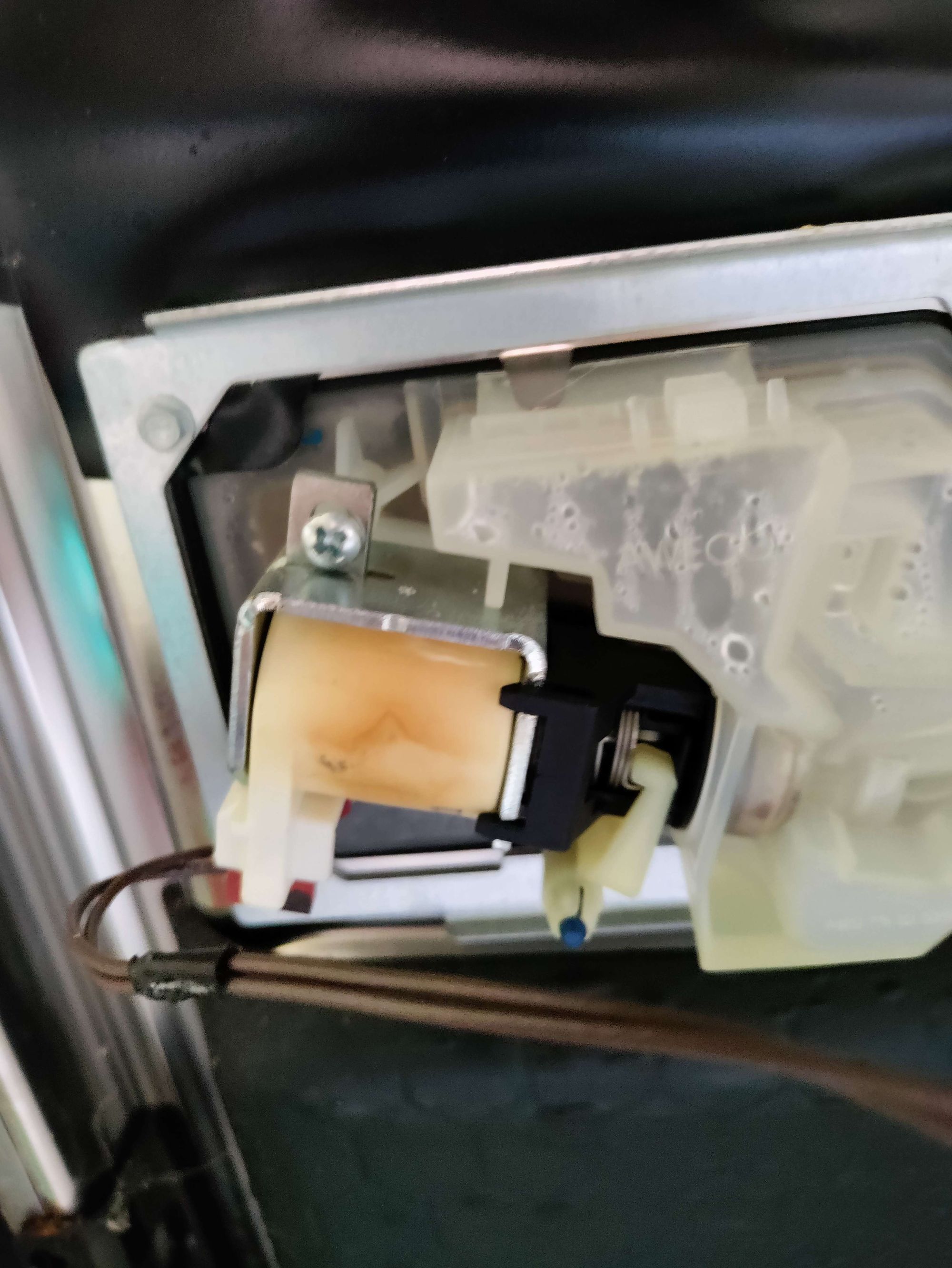
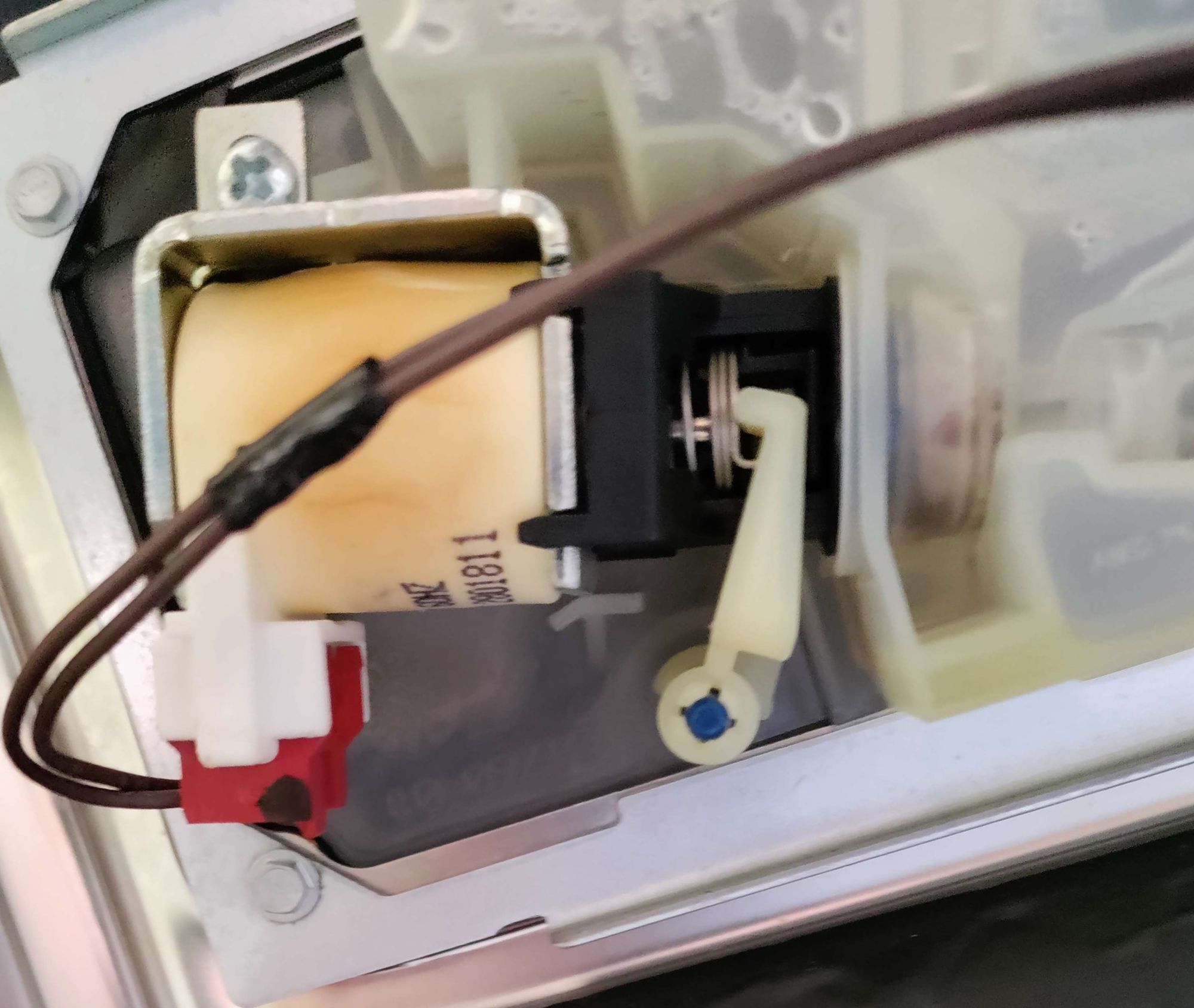
This mechanism is the actuator that automatically releases the latch on the soap dispenser. The burnt out white thing is a normally closed solenoid. When turned on, the solenoid generates a magnetic field, which pulls on a small metal rod (visible in the center of the spring in the second photo), compressing the spring and pulling that plastic hook arm thing in the counter-clockwise direction. That hook is connected to the latch on the front of the soap dispenser, so when this hook moves, it unlatches the lid. When the solenoid is turned off, the magnetic field goes away, allowing the spring to expand so that the soap dispenser is able to latch again next time you want to run the dishwasher.
In case that orange-brown color wasn't enough of a clue that the solenoid is dead, you can also measure the electrical resistance using a multimeter in ohms mode. Based on my research, it seems like 200-400 ohms is a common range for a working detergent dispenser solenoid. My multimeter wouldn't give me a resistance value at all, meaning something inside the solenoid had been destroyed so there was no longer electrical continuity. It was definitely broken.
I needed a replacement solenoid, but how could I find one in exactly the same size? There's some text on the front of the solenoid:
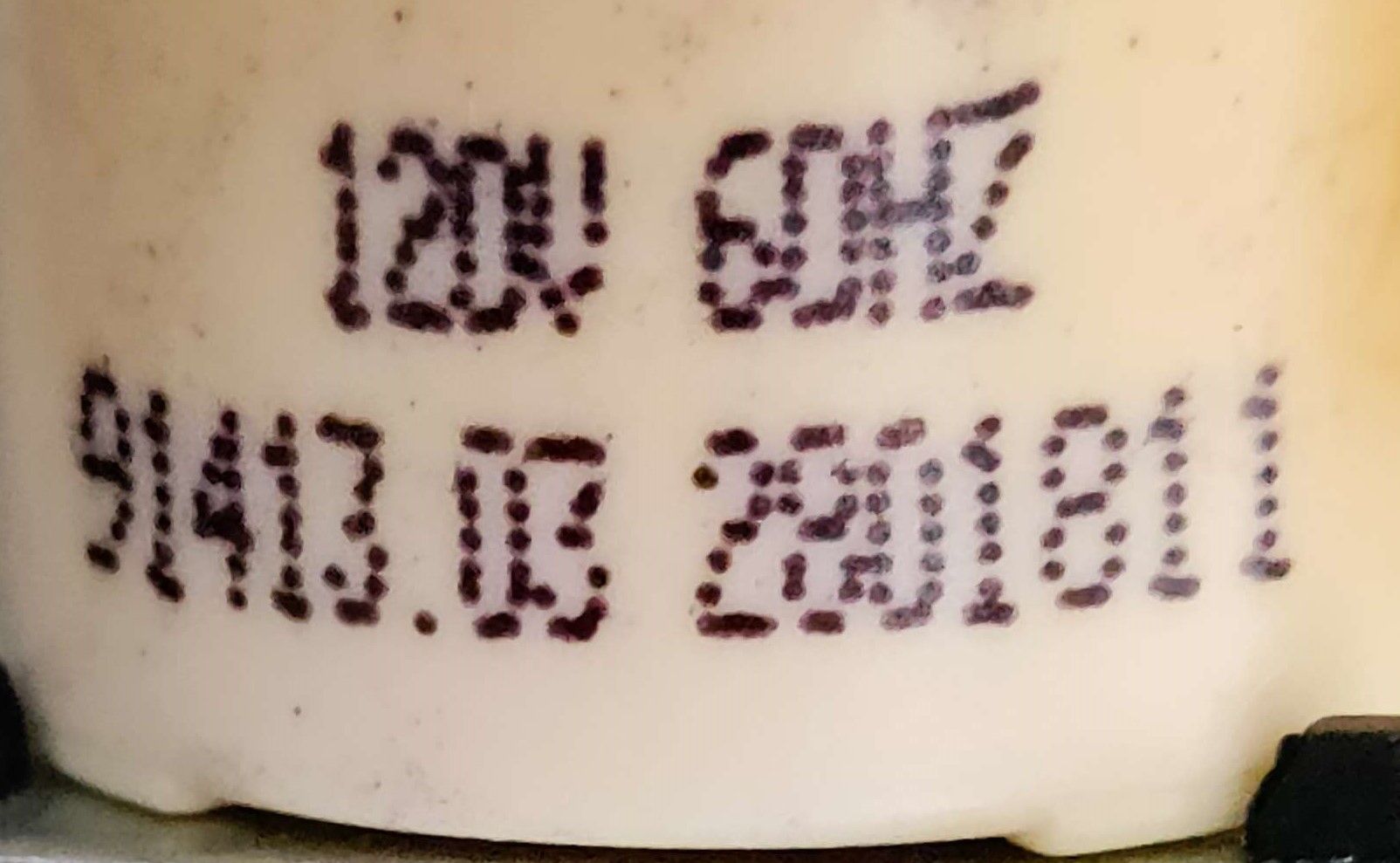
Searching for the 91413.03 part ended up being the key. I'm not sure what the 2801811 part means. I could only find used solenoids pulled from other dishwashers, no brand new ones, so I ended up buying one on eBay for $20.

I ran the dishwasher again after installing it, but the soap dispenser door still didn't pop open during the wash cycle. There must be something else wrong. There are two brown wires coming off of the solenoid that lead back to the main control board.

Along the bottom of the control board you can see a connector labeled BROWN with two terminals labeled DISP:
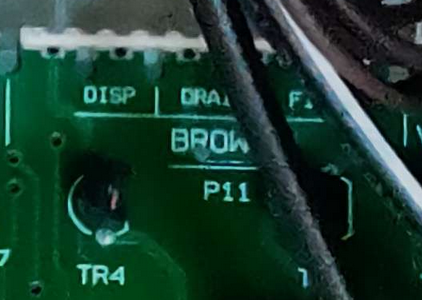
This is where those two brown wires lead to. One of the two wires simply connects to power. The other one leads into a triac (labeled TR4 in the image above).
A triac is basically a high voltage switch that connects two spots on the circuit board when it receives a signal from a third, separate spot. You can think of it like a circuit breaker or a relay, except, unlike either of those, it's a solid-state semiconductor, so there are no moving parts.
In this case, the triac is used to make or break the circuit that allows power to flow to the solenoid. When the triac is triggered, the solenoid's power circuit is complete and power flows through the solenoid, unlatching the soap dispenser lid and releasing the soap.
Eagle-eyed readers may be able to make out that TR4 in the image above has, unfortunately, exploded.

Thankfully, these triacs are off-the-shelf parts (part number 0107NA) you can buy online from any electronic components distributor (e.g. Mouser, DigiKey).
In my haste to fix the problem and get our dishwasher back in working order, I ended up purchasing a replacement from Amazon, because it was cheapest and had overnight shipping. The only catch was that pins 2 and 3 were swapped on the new triac, but I didn't let that dissuade me.
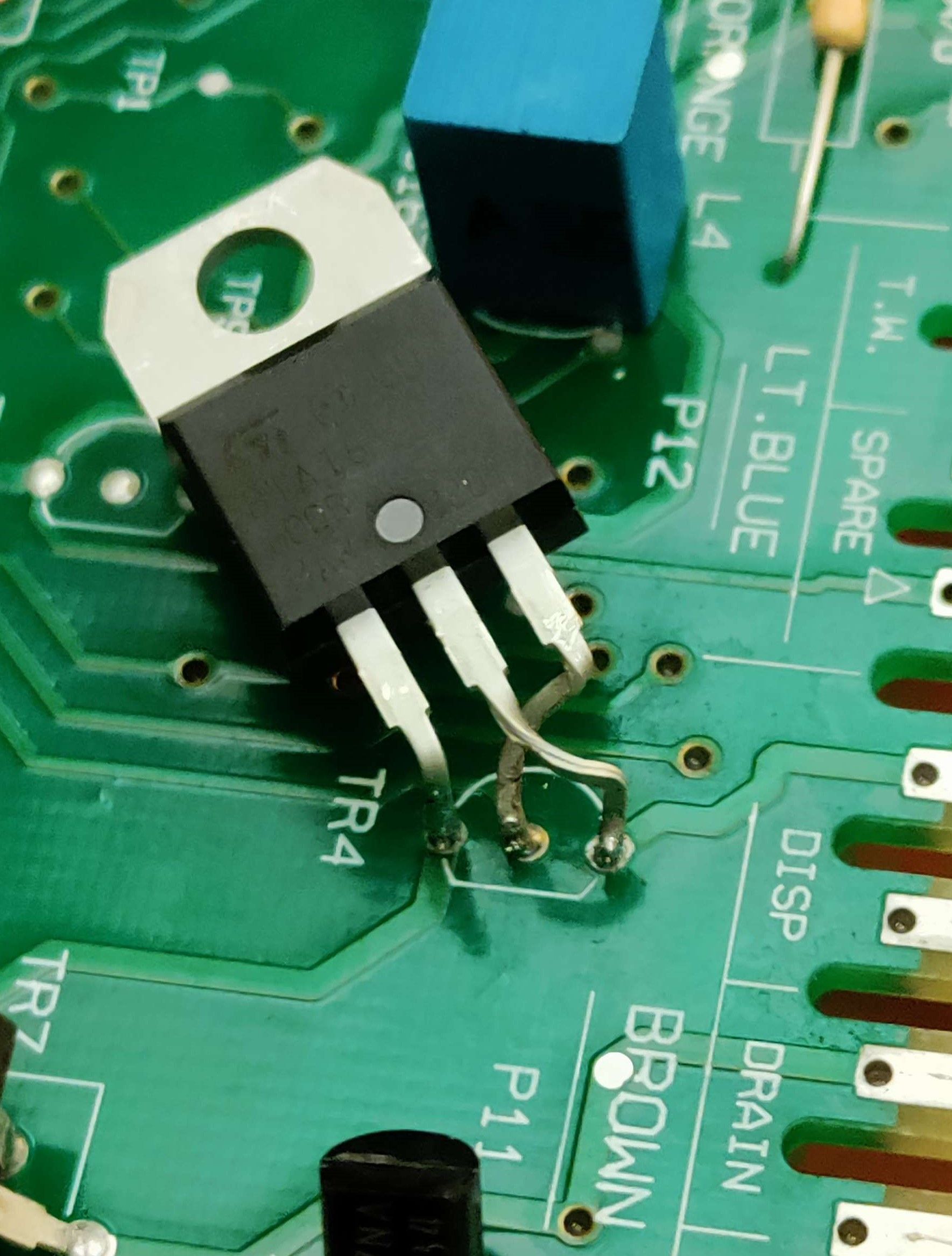
Unfortunately, after assembling the dishwasher again, the soap dispenser still wasn't working. Rather than looking for other problems, I started getting self-conscious that my Amazon triac, a BTA16-600B, may not have been the correct choice due to a minor difference in the datasheets, so I ended up ordering an exact replacement 0107NA from Mouser instead.
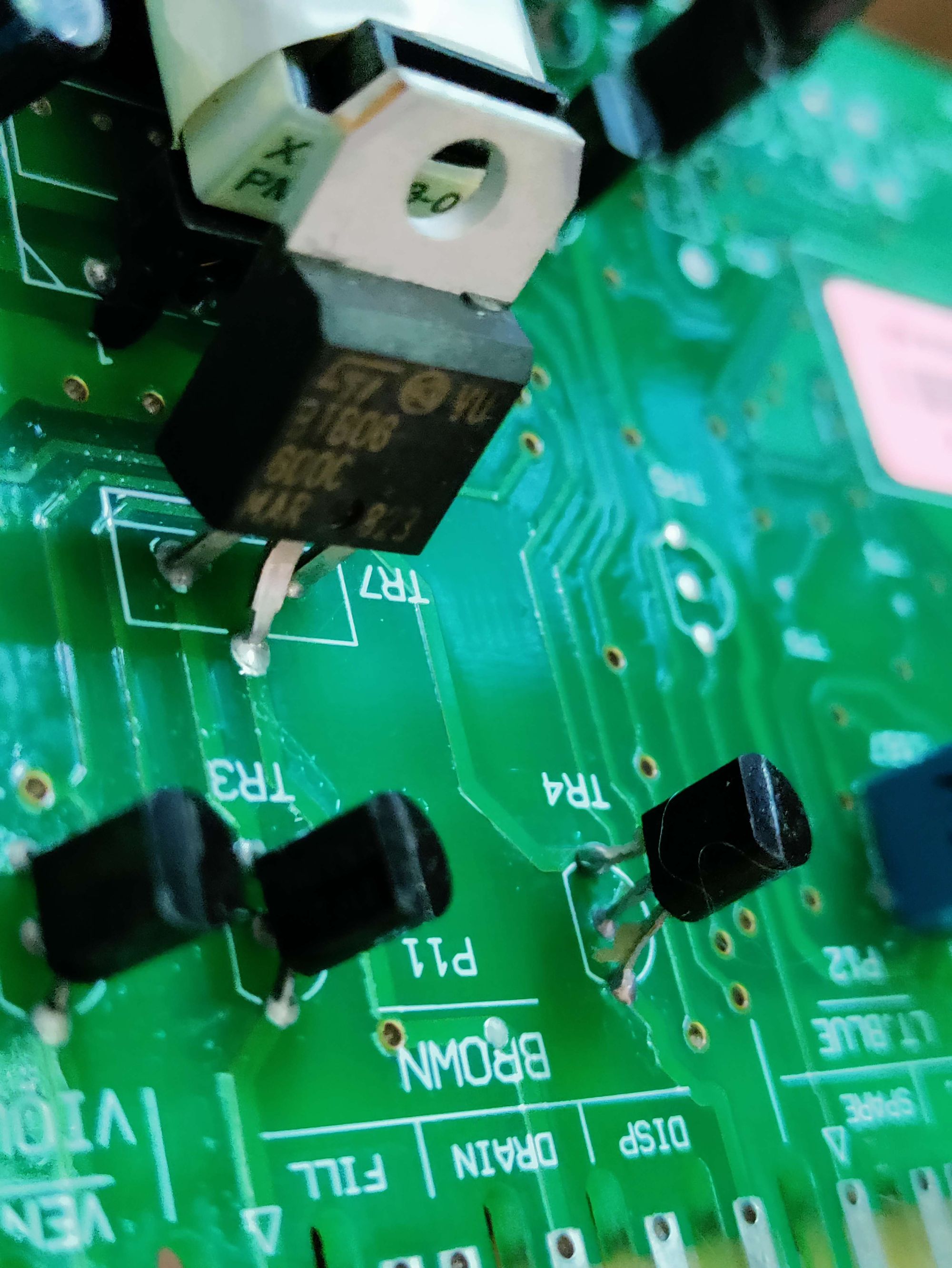
That's better! However, the dishwasher still didn't work after this.
I followed the trace leading up out of the first leg of the triac to figure out what other components were left to rule out. All that was left was what appears to be a big SMD microcontroller and one resistor. I figured the microcontroller was probably fine, since literally everything besides this soap dispenser seemed to be working, so that just left the resistor.
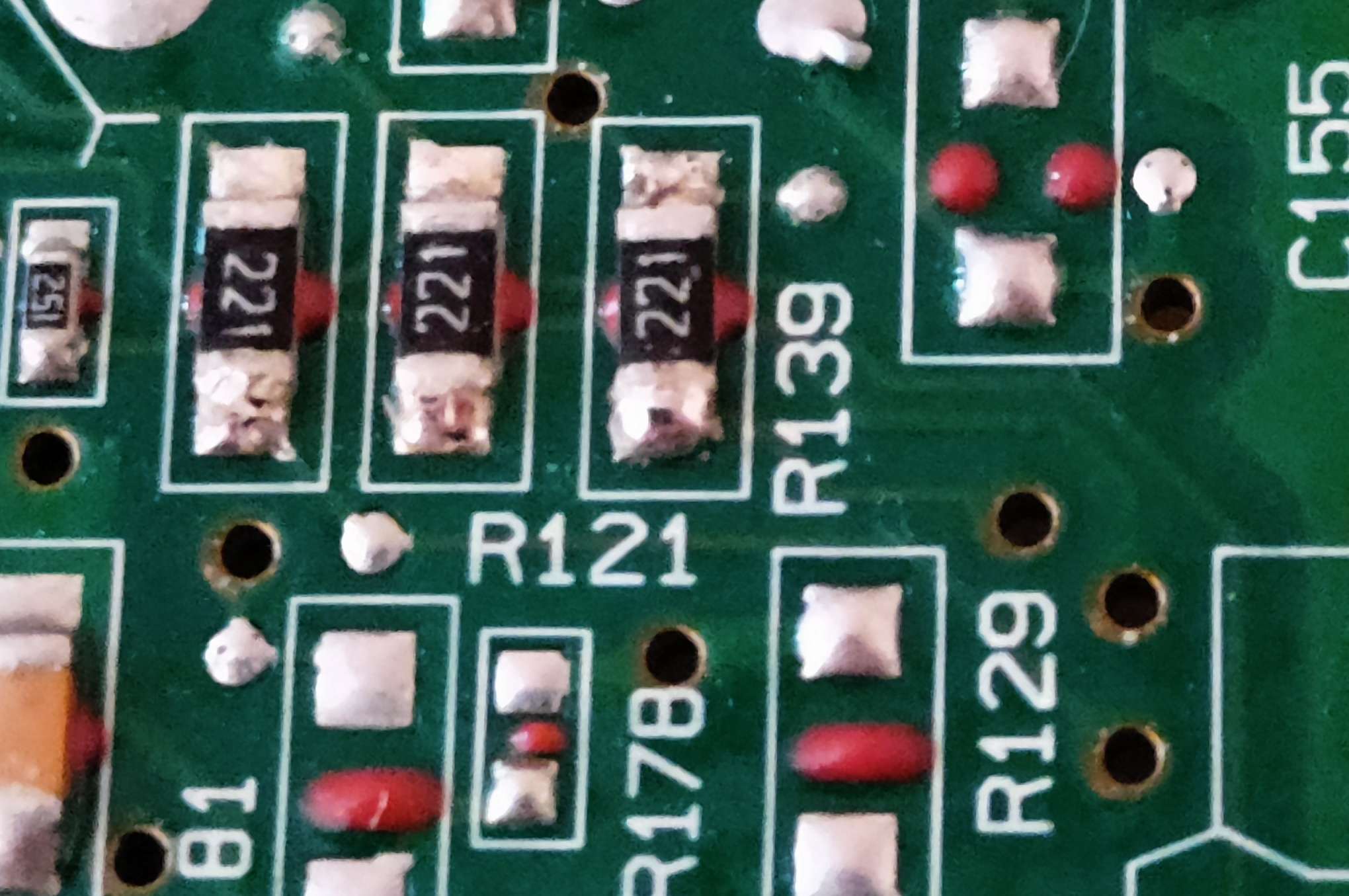
My multimeter would not give a reading for this resistor's resistance, even after removing it from the circuit board, while the two next to it both correctly read as 220 ohms, so this resistor was definitely dead!
I don't have any SMD components on hand, but I do have plenty of regular old resistors.
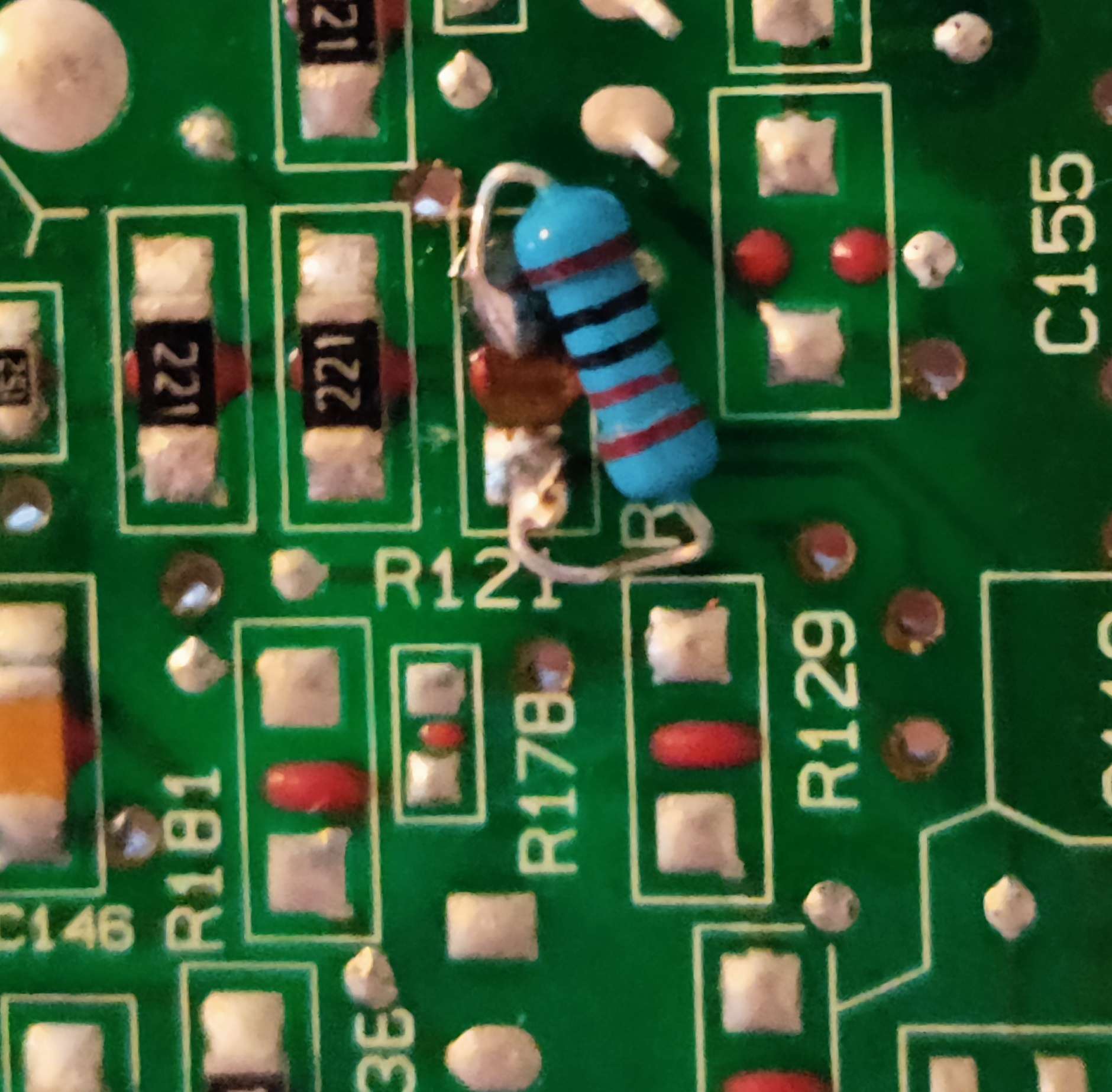
The new resistor obviously sits a little taller than the one it replaced, but the plastic enclosure that holds the control board in place still gives the new resistor enough clearance that it isn't touching anything.
To everyone's surprise, the soap dispenser works now. Our dishes are clean again!
In hindsight, I'm curious if the triac I bought from Amazon would have worked fine had I found and replaced the dead resistor.
Just goes to show that it never hurts to open something up and try to diagnose the problem yourself before you pay to have someone else look at it or throw it away. Sometimes, the parts that went bad are easy to spot and source replacements for.
It's also an opportunity to exercise my problem-solving muscle and potentially learn something new about the inner workings of an everyday machine that I often take for granted. Challenging our collective acceptance of planned obsolescence is a nice bonus too.
Most complex things are actually just made up of a bunch of pretty simple things connected together, and, with a little research, can be broken down into digestible, bite-size chunks. Buying into the idea that anything technical is too complicated for "laypeople" to understand only serves corporations, who are eager for you to give up and hand them $700 for a brand new thing that shoots hot water and soap at your dishes. They'll even haul your old one away to the landfill so you don't have to think about that part.